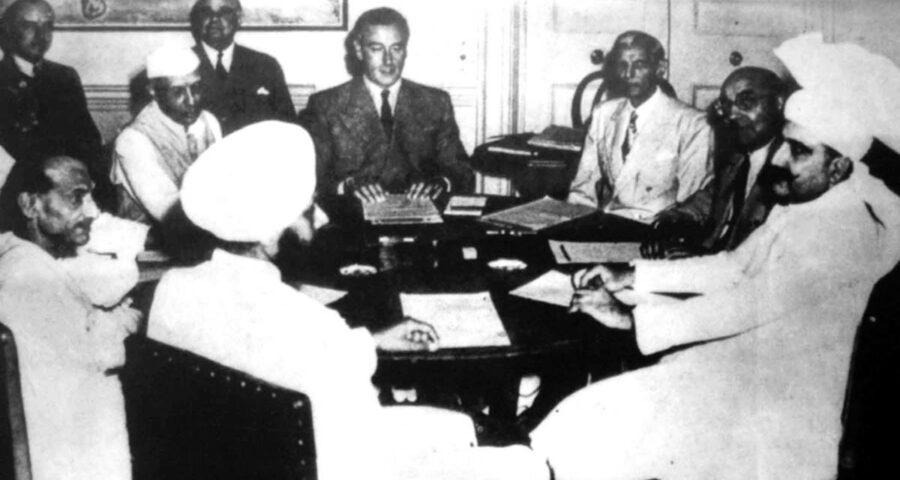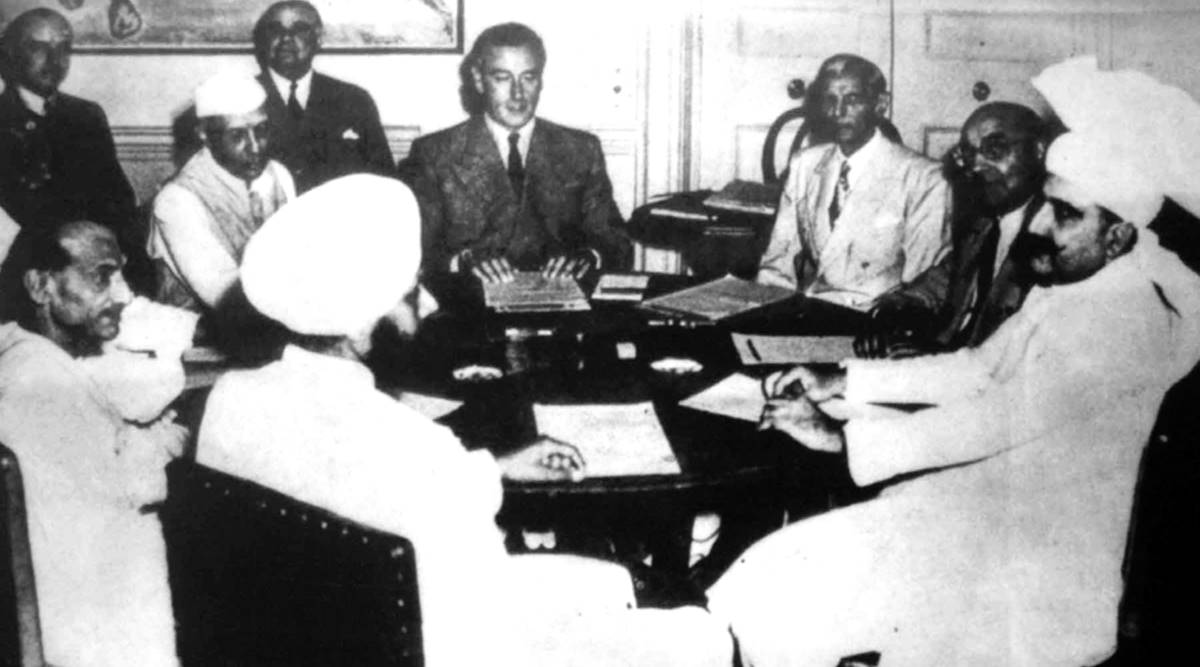Instead of nationalising an event of trauma and freezing it in the frame of time as a day, a memorial or a series of memorials rooted in the context of their time and space are what we need to not forget the trauma of Partition and remember it humanely
Prime Minister Narendra Modi made a significant announcement from the Red Fort this Independence Day that henceforth, August 14 would be observed as Partition Horrors Remembrance Day. The announcement is significant because it is the textbook example of history operating as contemporary discourse. Simply put, it shows that the BJP intends to use the past to aide its politics today. It reaffirms the argument that the Partition is long from over. That it is an ongoing phenomenon that continues to be a factor in the function of India’s (majoritarian) politics. But there is more to the proposal than meets the eye.
The proposal wants us to “remember” the days of the Partition and it wants to define for us that which we shall remember on the day that our adversarial neighbours celebrate their Independence. The act of a Prime Minister of a nation state announcing the National Day of Remembrance standardises remembering and conflates the grand design of history with memory. As dangerous as it is, this standardisation of remembering as a national exercise comes at a critical point in time.
My generation — the millennials — are among the last Indians and Pakistanis who grew up listening to stories of the Partition from our grandparents. The people who lived through the Partition in their conscious age are in the last phases of their life — many have passed away. With them, we lose our last connection to the lived experiences of the Partition. We will be the second-hand carriers of these stories, and with the passage of time, the human tale of the Partition will forever be lost.
But why are these stories important? They are important for two major reasons. Firstly, memory humanises history. History as a discipline — that which relies on text and physical evidence — has been taught and written as a mere outcome of the socio-political phenomena of the time. In this view of our past, the only human insight that is afforded to us are people as bodies and statistics.

Where do we go from here then? On the one hand, we stand at a juncture in time that makes it immensely important to conserve the human stories of the Partition, and on the other, the politics of our nation wants to standardise it. The answer resides in architecture and design — memorials, sculptures and museums. It resides in objects and oral histories and not in national days.
Objects are sites of memory. Check your bag. You will find at least one object that has no apparent utility for you, but it travels with you as a remembrance of some event or some person in your life. You carry it to memorialise a particular slice of your life. In this object lives a specific memory — an intangible entity that the tangible object triggers. Objects, hence, often function as habitats of memory and the power of objects to liberate the past from text has been well articulated by historians such as Neil MacGregor and Anchal Malhotra.
There is, however, a caveat here. In the realm of the private and personal, the memorial object is hardly a matter of contestation with any other narrative. However, when memorialisation takes a collective form, the politics of memory and memorials is extremely critical in deciding who takes the agency to draw the past for us as people. This is what — as a society — we build memorials for. We build them to remember and memorialise a certain collective memory. The questions then arise, who has the agency over these memorials, how do they function? More importantly, where can they be located and whose memory can they crystalise and secrete?
In this context, Germany is a good example to learn from. The country has a disturbing history of trauma and persecution and the physicality of that past lingers on in the form of ghettos, Nazi military compounds and concentration camps. The German society, however, has executed some exemplary works of architecture and design to preserve the memory of Jewish trauma and remember it collectively. And they did it just in time for preserving oral histories — just as the generation that witnessed the Holocaust was departing from the world.
The Jewish Museum in Berlin designed by architect Daniel Libeskind is a good example. The idea for the museum started just before the fall of the Berlin Wall in 1989 and was originally envisioned to be a part of the Berlin Museum under the state of Berlin. Its director, W Michael Blumenthal, made sure that the institution’s autonomy was secured and it became separate from the state government. The museum’s imagination and goals were conceptualised in complete independence. In his design as well, the architect chose to focus on taking the visitor through a journey of personal traumas and human stories rather than that of the political phenomenon manifesting into a certain number of millions of people dying. The museum seeks to be experiential and not exhibitionist.
Another good example from Germany is the Memorial to the Murdered Jews of Europe, an open-air installation designed by architect Peter Eisenman consisting of nothing but two thousand seven hundred and eleven slabs of concrete. The text — that which shackles memory to history — simply announces the title to the visitor in German. One is then taken through a series of orthogonally arranged crowd of slabs that become increasingly claustrophobic due to changing height and restricted vision until you see very little of the sky and find yourself surrounded by what can be understood as people walking to their death. The title is also devoid of hierarchy within the Jews who were murdered — you cannot tell who in particular it stands for. It stands for the murdered Jews — everyone from Rosa Luxemburg to the millions of nameless people.
It is noteworthy that while the memorial stands for murdered Jews, it does not say who killed them. This underlines another aspect of memory — forgetting. As the perpetrators of trauma depart to natural decay of time, communities that bear similar cultural identities live on. In the case of India’s Partition — the Muslims of today are the usual recipients of the blame. A standardised collective remembering of trauma seeks to incriminate people of the present. Forgetting, therefore, becomes essential to the discourse of memory. Writing about the Memorial to the Murdered Jews of Europe, Richard Brody, art critic and one of the editors at The New Yorker, said: “… it doesn’t say anything about who did the murdering or why — there’s nothing along the lines of ‘by Germany under Hitler’s regime’,” and the vagueness is disturbing. Of course, the information is familiar, and few visitors would be unaware of it, but the assumption of this familiarity separates the victims from their killers and leaches the moral element from the historical event, shunting it to the category of a natural catastrophe. The reduction of responsibility to an embarrassing, tacit fact that “everybody knows” is the first step on the road to forgetting”. Along with these two prominent memorials, towns across Europe have their own memorials and sites — sometimes even restored concentration camps.
With the Partition, owing to the complicated colonial processes of the twentieth century, we encounter a problem that is much more complex than that of Germany. But there are examples at home also. The Kolkata Partition Museum envisioned by Partition scholar Rituparna Roy seeks to remember both — the rupture created by the Partition and the continuities between the divided lands of Bengal. The project focuses on specificity of human stories rather than any grand narrative that is qualified by the state archives. Another good example is the Conflictorium: Museum of Conflict in Ahmedabad. Housed in a donated property in the heart of one of Ahmedabad’s most communally vulnerable neighbourhoods, the museum conducts exhibitions and events that are a sensitive exercise in both remembering and forgetting.
Instead of nationalising an event of trauma and freezing it in the frame of time as a day, a memorial or a series of memorials rooted in the context of their time and space are what we need to not forget the trauma of Partition and remember it humanely. National days standardise memory and trauma and align them to politics. Memorials, on the other hand, allow for the crystallisation of individual experiences in a physical entity. And most importantly, like the examples cited above, memorials can give up the agency of story-telling. They can serve as objects of crystallisation of human tales and secretion of those tales as shared memory; neither too specific, nor too vague. The site of memory (Lieux de Memoire), as the French historian Pierre Nora defines it, is capable of an expanse of ethereal space that can incorporate memories at all scales.
Zuberi is an independent scholar and researcher of Architecture and City Studies
Source: Read Full Article


